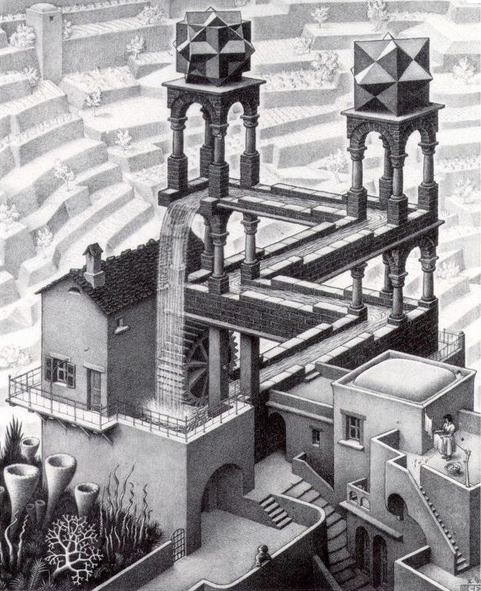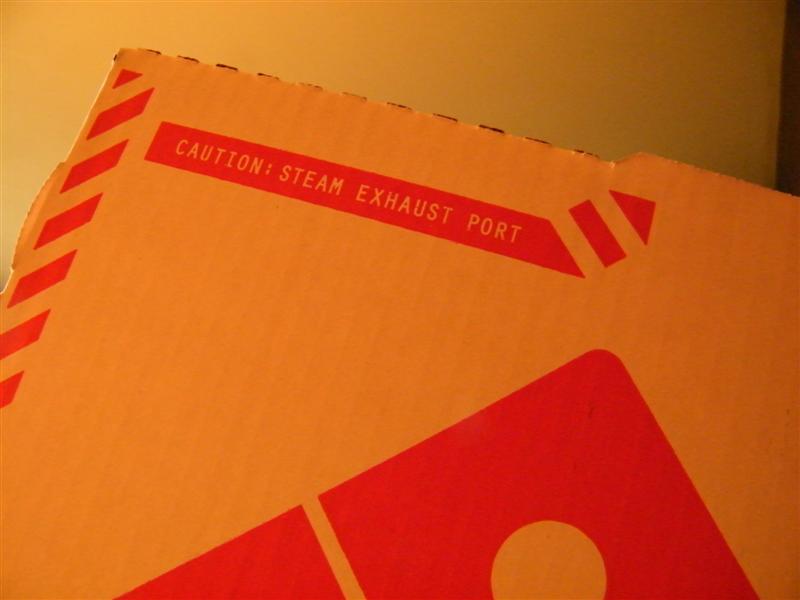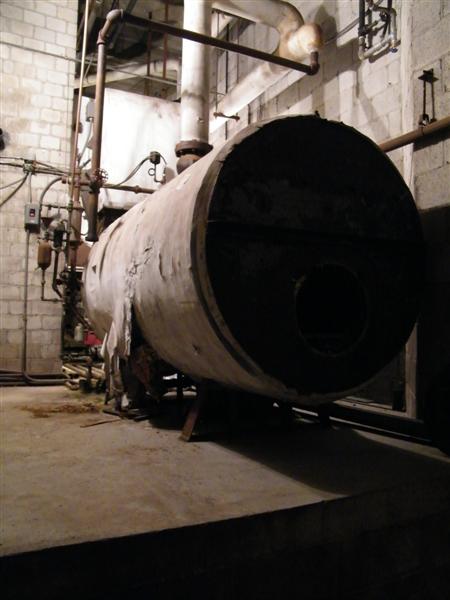



Sometimes we fix things when they are broken, sometimes we fix things that are just fine, and sometimes we actually wonder about what we are doing; Such is life. Beyond making things work as they should, it is interesting to think about the efficiency issues we see everywhere. The guiding principle of this part of thermodynamic studies is found in Carnot's theorem. Follow this link to Carnot's Theorem and maximum limits on thermal efficiency for concepts that appear deceptively simple as they face us with head-scratching limits on what we can and cannot actually achieve with our heating machines.
There was a time when people believed in perpetual motion. For most of our history, wide-eyed researchers attempted to build the perpetual motion machine with the aim of powering all sorts of appliances off of them; It's nice stuff if you can get it. Meanwhile, thermodynamics proved everything impossible: it was the mechanical engineers who did it. We need sound heating solutions because our lives depend on it.
There is practical knowledge gained in the field. This stuff makes the world turn.
There is pure science that just boils out of someone's steaming hot brain. This stuff fills books.
There is false information gleaming off the glossy marketing brochures. The bits and pieces of this stuff feed the self-contradicting experts.
Now, there can be hacks in every one of these three groups, of course, but which one is the natural shoe-in for seductive double talk? In the first one, it is really a hard sell pushing practical boiler installations that don't work. There is a natural selection going on here, kind of like in the pure science world where mathematical additions have to stand on their own. Anything else becomes a very apparent failure as obviously witnessed by everyone.
In the third group, it's quite different: ideas and concept merely wane in and out of fashion with no consideration given for their being either practical or scientific. Anything not trendy is labeled as wrong, hands-on knowledge not withstanding, powerful theory not withstanding. The world is a dangerous place, particularly for gorgeous old buildings and gorgeous radiators.
While I see the practical guy in an intimate alliance with science - not just in bed together, but deep under the covers - I think there are also many occasional affairs going on both parts with all the sultry marketing models lining up on the sides. Their scantily clad demeanor has us obsessing about them: --oooh how we'd like to peel off those sticky productivity labels. Too often we leave the perceived boredom of practical science for those dangerous liaisons and their broken promises of efficient fun.
Gosh, what am I talking about?
It's no good dumping your home heating system just because you're tired of your boiler. Many and most homes have very long and very happy marriages with their heating setup as evidenced by the years of little BTUs that come out of the union and into our comfortable lives. Everything is usually blissful until some heat bits rebel and become runaways. Blame poor piping communication and inconsistent thermostat control in most cases - and yet - the sign of the time has us trading in one boiler for another that comes with youthful efficiency numbers, essentially hanging parts that go flabby one after the other because the grass is always greener on the other side of the fence. A broken system is not improved with the simple replacement of the heating appliance; it just gives off signs of being broken all that much more. It's no way to be happy.
OK so what? Heater and Gem are an item, aren't they?
The sound values of remaining faithful to our longtime relationship with the steam boiler is not the sign of an obsolete time. Having your pipes warmed up by a healthy, well fed, well exercised and well maintained steam system, or either a hot water system, is still in all likelihood the best way to go for top efficiencies. Nothing has ever really changed
Better people than me have argued and wondered about some deep discrepancies between the promises of new technologies and their application. Essentially raising doubts at the efforts of fixing systems by only looking at what the boiler does - in total abstraction of what the building and the heating system are meant to do. Sadly, there are many buildings that get trapped into these ruts where every year or so it's a new boiler... they get trapped into aimless heating designs that don't perform at all as expected.
There is a building beyond the boiler room and it is being ignored.
Talking about combustion efficiency with many other professionals and personally measuring those values for a long time has shone a rift between, what, more than 30 years of successful practical knowledge that may be entered as anecdotal evidence, against a much more recent set of trendy ideas, trendy efficiency labels and a trendy low temperature quest that's got to leave us scratching our head. Fine. So? Is there anything wrong with that? Gimmicky pamphlets don't even constitute a shred of evidence, let alone on the anecdotal side.
Let's see where the rift is if we bring in a bit of heavy duty thermodynamics...real book proof science.
A low flue temperature can be an indication of many things. Ideally it could be the symptom of top efficiency. Much more simply, it could also be the result of lowered combustion temperature - fiddle too much with primary and secondary air and your burning temperature is modified. Tell me about soot. Proof of this is easily observed on any adjustable torch and in most wood stoves. So, is it good or is it bad to have a lowered combustion temperature?
The fad of the day touted by experts who are not color blind is to go low temps. Small is beautiful and down low cold is stone cold. Right. Now. Well. Meanwhile, the thermodynamics chapter on thermal efficiency says going hot, hotter and hottest is the only way to efficiency - and this one is no whim, this is old proven science with examples galore, it is also very intuitive: if we just think about it a little it explains everything in matters of heat flow and heat transfer.
The dangerous liaisons seem irresistibly hot but they are a matter of cold sweats.
Thermal efficiency is proportional to the giant heat jump calories take from flame temperature down to flue temperature. It's more than a 2000 degree step. Meanwhile, as we read so many trendy efficiency guidelines, we are told to be all horrified by 50 degrees of variation on the flue side exhaust while blissfully ignoring the fire temperature where a 50 degree swing would appear as all smoke.
Lowering flue temperatures is indeed one of the routes to increased thermal efficiency... buuuuut... if the low smoking temperature occurs at the expense of lowered firing temperature - well then, all the science books will tell you that your efficiency was decreased. Sometimes in inconceivably monstrous ways.
Anecdotally, and to show how these efficiency matters are not a new obsession at all, in my company, it is almost forty years now that we got into measuring fire temperature in industrial boilers. It is kind of trivial nowadays, but then instruments were something else and we made it a small and successful specialty of ours. Meanwhile, in real power plants, this routine has always been the key to optimized efficiency and would you believe it, fuel has always been very expensive to waste. More so than the left over Friday doughnuts.
So there, another long winded post just to remind us of one of the fundamental rules of thermodynamics: the one that says -go hotter, -increase the thermal jump, and thermal efficiency will be the payback. This applies to boilers, to car engines, to radiators and everything else in life. It explains why system-wide warm air furnaces come with lower thermal efficiency than hot water heaters and why further up the line, the steam boiler delivers even more system efficiency and the trump all thermal efficiency comes from district plants at 350 F.
Combustion efficiency is more than just flue temperature. Nothing is simple, and on the whole, I see no under cover divergence between the practical field results described in this post and the real science of thermal efficiency. Perhaps it would help to put this into glossy labels meanwhile, satisfying oneself only on false knowledge is the most efficient way to make sure we'll not understand what is going on at all.
Boiler beware.